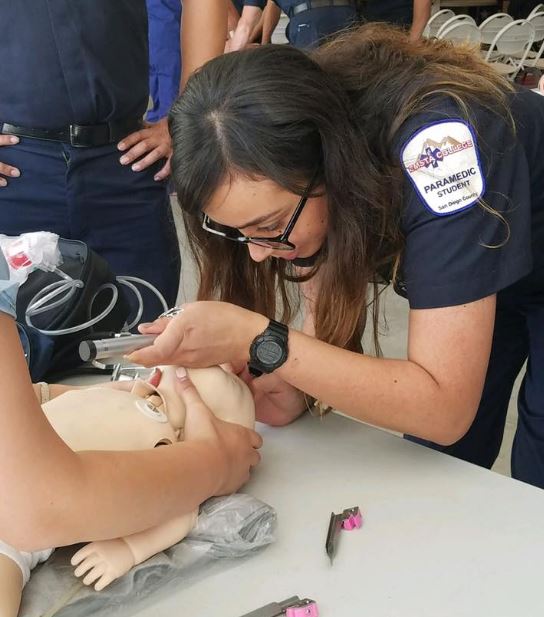October 24, 2017

The Scope of Practice Committee is a part of the larger EMS Medical Directors Association of California, or EMDAC. This body is comprised of physicians who lead the 33 Local EMS Authorities, or LEMSAs, across the state. The organization acts in an advisory role to the EMS Authority.
On September 12th, 2017, the Scope of Practice Committee, and EMDAC as a whole, convened to review the skill of Pediatric Intubation. It appears the committee had already begun to review the advanced airway procedure over the preceding year. They planned to create an in-depth review of the procedure and the training programs that support it. They also continued to approve optional scopes which included pediatric ETI in that period. “It was my belief that data would show the procedure was not causing adverse patient outcome, rather that is was neutral,” states Dr. Kenneth Miller, chairman of the Scope Committee and Director of Santa Clara EMS. Dr. Miller attempted to begin an effort to track intubation data and review training procedures in his own EMS region, but had not completed these efforts prior to a decision being rendered by the committee.
Dr. Donofrio, Associate EMS Fellowship Director at UCSD and EMS Medical Director at Rady Children’s Hospital of San Diego, made a presentation at the September meeting that strongly encouraged the membership to vote on the topic. Her presentation condemned the skill in the areas of initial training, ongoing training, patient risk, and patient outcomes. The summary also suggested that failed pediatric intubation is a potential contributing factor to paramedic PTSD and that the mental health of EMS providers should be weighed when creating policy.
Utilizing data from studies dating back to the 1980’s, the presentation argued that pediatric intubation is a problematic skill. Cited research raised important concerns with serious complications, such as incidents of unrecognized esophageal intubation. However, the implementation of end tidal CO2 capnography in most California EMS services occurred in the mid to late range of these studies referenced. It is unclear if those issues would still be present in any modern EMS system where the technology is in play. The topic of paramedic initial and ongoing training confounds the issue further. Medical directors defending the move argue that protocol decisions must be made with consideration to the lowest trained and minimally performing paramedics, since there is no advanced paramedic differentiation that could recognize these higher skill procedures.
According to those present during the meeting, the bulk of the discussion was somewhat narrow– centering on the presentation and its selection of data and studies. There was at least some concern voiced that there was no current data available to accurately reflect the state of the skill. The California EMSA acknowledges that it does not track any data regarding pediatric intubation, shining a light on the difficult position in which medical directors are placed. They must make important decisions on how emergency medical services are provided to the public, often with limited data.
Dr. Marianne Gausche-Hill, Medical Director for the Los Angeles authority and President of EMDAC, appears to have been one of the most ardent supporters for the reduction in paramedic scope. Los Angeles paramedics currently do not have the ability to intubate pediatric patients, as the optional skill is not requested by her administration. Dr. Gausche-Hill authored one of the preeminent studies on prehospital airway management, completed in 2000. The study found no difference in outcome of BVM vs ET intubation when performed in an urban environment. This research was a foundational part of Dr. Donofrio’s presentation.
EMS providers are no strangers to change. Longboard spinal immobilization, a simple but mainstay trauma treatment, is the latest procedure being phased out across the country after studies showed detriment to patients. While the stakes are higher with airway procedures, paramedics argue intubation is still accepted as the standard of care in emergency medicine, and that it is only paramedic training and utilization of the procedure that is in question. In San Diego, an effort to implement a rapid sequence induction (RSI) protocol revealed the difficulty faced when implementing a sufficient and ongoing training program for a protocol with low utilization levels. That program was ultimately cancelled. The medical director behind the program stated the results were frustrating. The program was intended to show the benefits of prehospital RSI, but instead the study reflected a significant training and skill retention hurdle. A similar frustration, and some fear, appear to have played a role in the EMDAC decision.
In review of this decision and the process by which it was reached, one of the most noticeable features is the very apparent lack of paramedic involvement. This decision is a top down move by the oversight body. Whether this is due to a lack of involvement by paramedics, or a lack of desire for paramedic involvement by their medical directors, is debatable. Individuals close to the issue say it is most likely a mixture. Paramedics are now voicing concern that the oversight body is taking a stance of scope limitation in place of educational advancement.
For now the committee has spoken and the California EMS Authority will uphold their recommendation. Outside of a reversal by the state authority or a request by the EMS Commission, the policy change will move forward. In its wake, EMDAC will now begin to look at policies to introduce perilarygeal airways in the absence of pediatric endotracheal intubation, as multiple medical directors attempt to give paramedics advanced options over simple bag-valve-masks. EMDAC will be reviewing these options at their next quarterly meeting this December.
Join our newsletter for updates as this topic develops.


